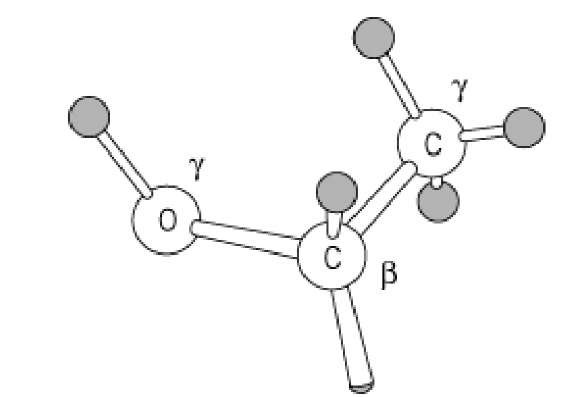The amino acid threonine is incorporated into the nascent polypeptide chain during protein biosynthesis in response to four codons—ACU, ACC, ACA, and ACG—and represents approximately 5.8% of the residues of the proteins that have been characterized. The threonyl residue incorporated has a mass of 101.11 Da, a van der Waals volume of 93 A3 , and an surface area of 146 A 2. Thr residues are changed moderately frequently during divergent evolution; they are interchanged in homologous proteins most frequently with serine, alanine, valine, and lysine residues.
The side chain of Thr is dominated by its hydroxyl group:
This hydroxyl group is normally no more reactive chemically than is that of ethanol, so there are few chemical reactions that can modify Thr residues in a protein specifically and readily. The only reaction that is generally useful is acetylation with acetyl chloride in aqueous trifluoroacetic acid. Note that the side chain has a center of asymmetry at Cb and that only the one isomer occurs naturally.
The hydroxyl group is very polar and hydrophilic and can function as either a donor or acceptor in hydrogen bonds. Consequently, Thr residues can be fully buried in protein structures, and about 23% are, especially if their hydroxyl group is paired in a hydrogen bond. The hydroxyl group is situated sterically to interact with polar groups of the polypeptide backbone, which affects its conformation and reactivity. For example, peptide bonds adjacent to Thr residues are especially susceptible to acid hydrolysis. Thr residues do not favor the a-helical conformation, and they occur in folded proteins most frequently in beta-sheets.
In native proteins, Thr residues are frequently modified by the addition of oligosaccharides (see O-Glycosylation) and phosphate groups.

